
Click to continue reading more on this update to the 2009 A117.1 Significant Changes.
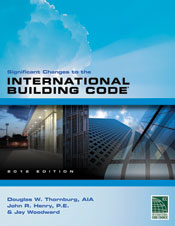

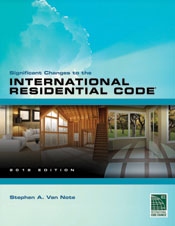

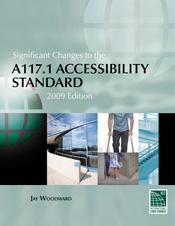
 |
||||||||||
| CODE UPDATE | ||||||||||
| Significant Code Changes to the 2009 A117.1 Accessibility Standard | ||||||||||
| (The information below is excerpted from the Significant Changes to the 2012 International Codes series.) | ||||||||||
| Two new exceptions are provided to eliminate the requirement for knee and toe space beneath small drink counters or furnishings where the element is not intended to function as a table for forward approach. Click to continue reading more on this update to the 2009 A117.1 Significant Changes. |
||||||||||
| The Significant Changes to the 2012 International Codes series has been developed by the International Code Council and published by Cengage Learning to assist code officials, architects, engineers and other construction professionals transitioning from the 2009 to the 2012 editions of the International Codes. The series offers a comprehensive yet practical analysis of hundreds of the most critical changes from a very active code development cycle. Each color publication contains: revised code text; a summary of each change listed; in-depth change analysis; and a detailed photo, illustration or table for each change to deepen understanding. Coverage reflects provisions with special significance, including new and innovative design ideas and technologies, modern materials and methods of construction, and current approaches to safety and stability. Authored by ICC code experts, these useful tools are "must-have" guides to the many important changes in the 2012 International Codes. | ||||||||||
 |
 |
 |
 |
 |
||||||
| CODE BASICS |
| Building, Based on the 2009 International Building Code |
| (The information below is excerpted from the 2009 Building Code Basics series.) |
| For people to have a habitable space in which to live, the IBC requires minimum dimensions in a building. A habitable space is defined as a space for living, sleeping, eating, or cooking. It is important to pay attention to objects hanging down from the ceiling or sticking out from a wall. When these objects protrude into an area in which people are walking, they can become a hazard.
Click to continue reading more on this excerpt from the Building Code Basics: Building, Based on the 2009 IBC. |
| The Building Code Basics series based on the 2009 International Building, Residential and Fire Codes and 2012 Building, Residential and Green Construction Codes explains requirements using non-code language to help you understand the material or explain it to others. Technically accurate and easy to understand, these are the perfect resources for builders, owners, students, plan reviewers, inspectors and permit technicians. Each book contains: 150-plus color diagrams and photos that help readers visualize correct code application; numerous real-world examples; content that pulls together related information from various code sections into one convenient location; and a glossary of code and construction terms to clarify key terminology as it applies to the code. |
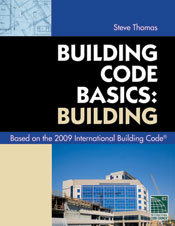 |
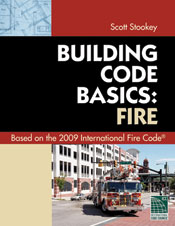 |
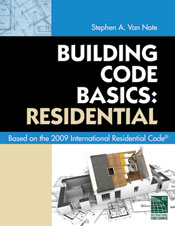 |
||||
 |
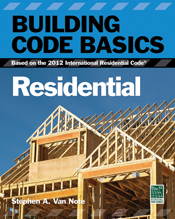 |
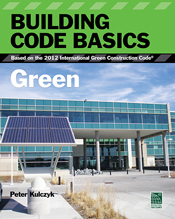 |
| CODE Q&A |
| 2009 International Existing Building Code |
| (The information below is excerpted from the 2009 International Codes Q&A series.) |
| Questions regarding accessibility requirements for alterations are raised and discussed: Q: We are converting an older warehouse located in our city's downtown into a mixed-occupancy facility. There will be retail and restaurant spaces on the ground floor and apartment condominiums on the upper four stories. There will be 55 new dwelling units. Because this is a change in occupancy are we correct in assuming that Section 1107.6.2 of the IBC applies and that we will need to provide a combination of Type A and B dwelling units in accordance with Section 310.6? There will be an elevator provided in the renovation. Q: We are converting an existing apartment building (Group R-2 occupancy) to a condominium complex. Do we need to comply with Type A and Type B dwelling unit requirements? If the prescriptive compliance method is being used, where do we find the requirements telling us how many units need to be adaptable for persons with disabilities? Click to get an answer to these code questions and to continue reading more on this excerpt from the 2009 IEBC Q&A. |
| Get expert answers to hundreds of the most frequently asked real-world questions. The 2009 Q&A series will assist engineers, architects, inspectors, fire and building officials, and plans examiners with finding answers to common code questions that arise during design, plan review, construction and daily code enforcement. Features: many new questions and answers; detailed photos, tables and illustrations that provide a clear understanding of both the intent and meaning of the code text; the relevant code section printed before the question and answer for easy reference; and discussion on a wide variety of topics including: accessibility, fire resistive construction, means of egress, building planning, foundations, fire protection systems, hazardous materials, plumbing and mechanical systems, prescriptive compliance method, determination of substantial damage, and much more. |
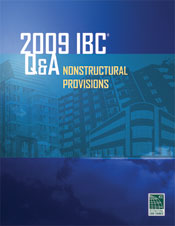 |
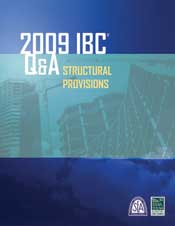 |
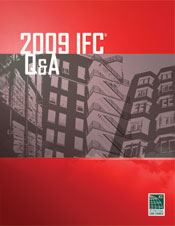 |
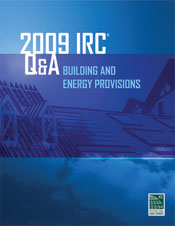 |
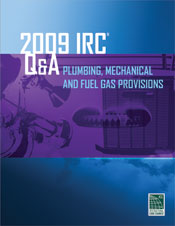 |
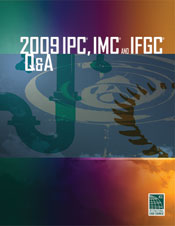 |
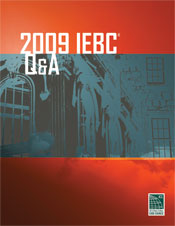 |
 |